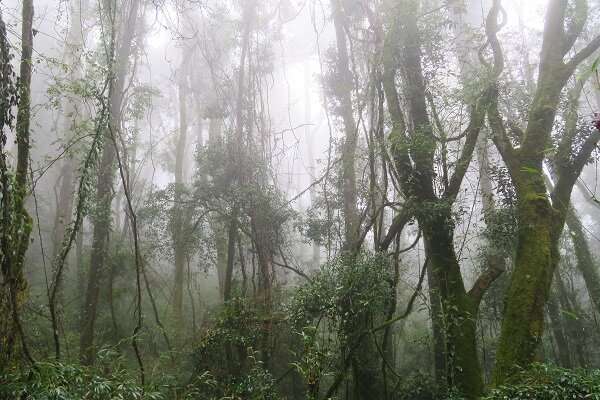Differentiation in water use by plants explains high diversity of Chinese subtropical forests

As a subtype of subtropical broadleaf forests, the montane moist evergreen broadleaf forest (MMEBF), also known as the montane cloud forest, is largely located in mountainous regions in southwest China. Water is a key factor in the formation and maintenance of Chinese MMEBF. However, the potential spatial-temporal water use patterns of co-existing trees in Chinese subtropical forests with a distinct dry season have not been studied till now.
In a study published in Agricultural and Forest Meteorology, researchers from the Xishuangbanna Tropical Botanical Garden (XTBG) of the Chinese Academy of Sciences investigated the water uptake depths and water use-related leaf traits of three co-occurring dominant canopy tree species at different growth stages in a MMEBF in Yunnan, SW China.
Using stable isotope techniques, the researchers revealed the isotope signatures of different water pool, as well as the spatial and temporal variations in root water uptake of a subtropical forest in SW China. The isotopic characteristics of ecosystem water pools (fog, soil, stream, lake, and groundwater) helped confirm the strong water conservation capacity of this subtropical forest.
An interspecific partitioning of water acquisition was detected among tree species of similar ages in 2018 (a regular year), but they tapped soil water from similar depths after experiencing drought event in 2019. The three dominant canopy tree species formed a niche separation in terms of vertical soil water acquisition, having different water use efficiencies and water transport efficiencies help them to facilitate species co-existence in the MMEBF.
The researchers found an obvious time lag of the lowest soil water content as compared to the meteorological dry season, as well as a time lag effect between the soil water dynamics and the switching of water sources of the large and middle-sized trees in MMEBF.
Moreover, the spatiotemporal partitioning of water acquisition was observed among different-sized trees. The large trees mainly acquired water from shallow soil layers, while the middle trees absorbed soil water from both shallow (0–30 cm) and deep (30–140 cm) layers.
Both the large and middle trees, however, switched their major water sources to the deep soil layers in 2019, which experienced more drought stress than in 2018. The small trees solely relied on the rainfall recharged 0–30 cm soil water.
"Our findings will provide scientific basis to explain plant co-existence in terms of the partitioning of water use," said Song Liang of XTBG.
More information: Liang Song et al, Spatial-temporal differentiations in water use of coexisting trees from a subtropical evergreen broadleaved forest in Southwest China, Agricultural and Forest Meteorology (2022). DOI: 10.1016/j.agrformet.2022.108862
Journal information: Agricultural and Forest Meteorology
Provided by Chinese Academy of Sciences





















